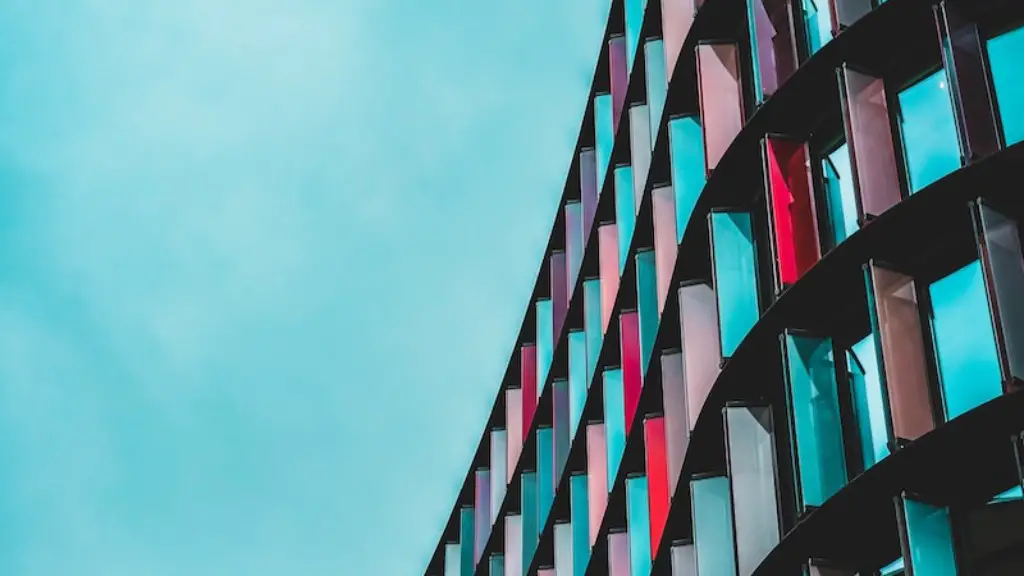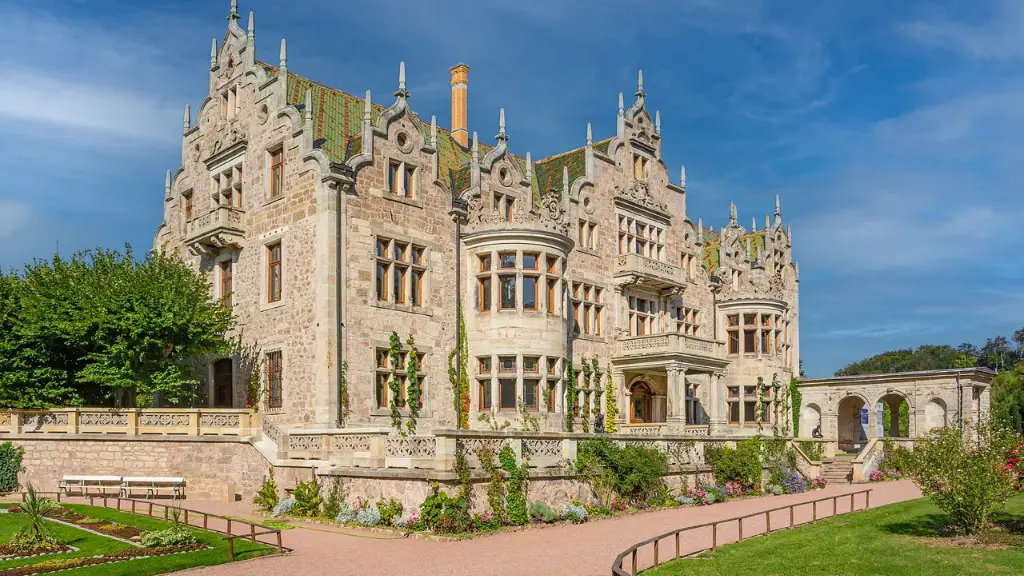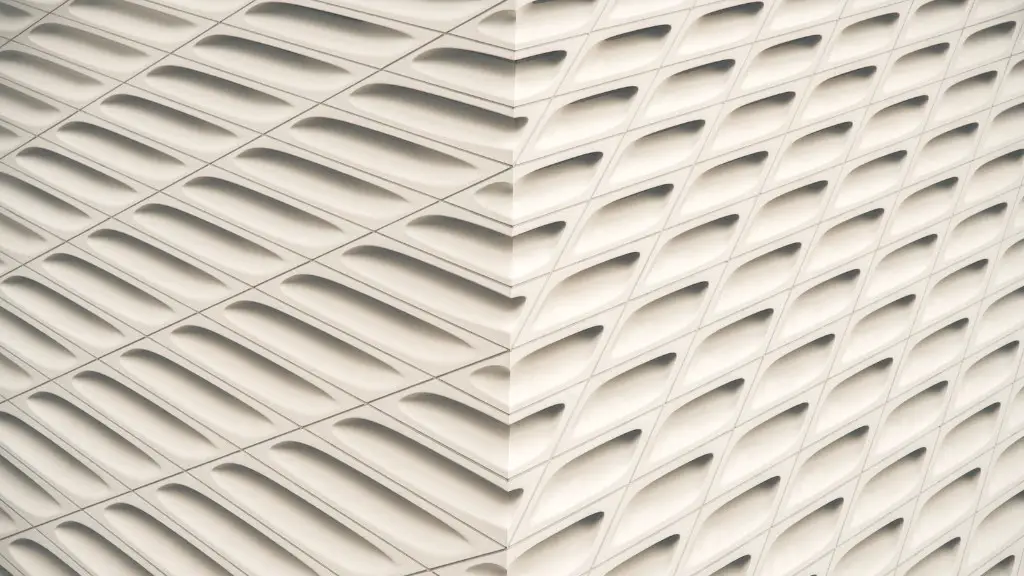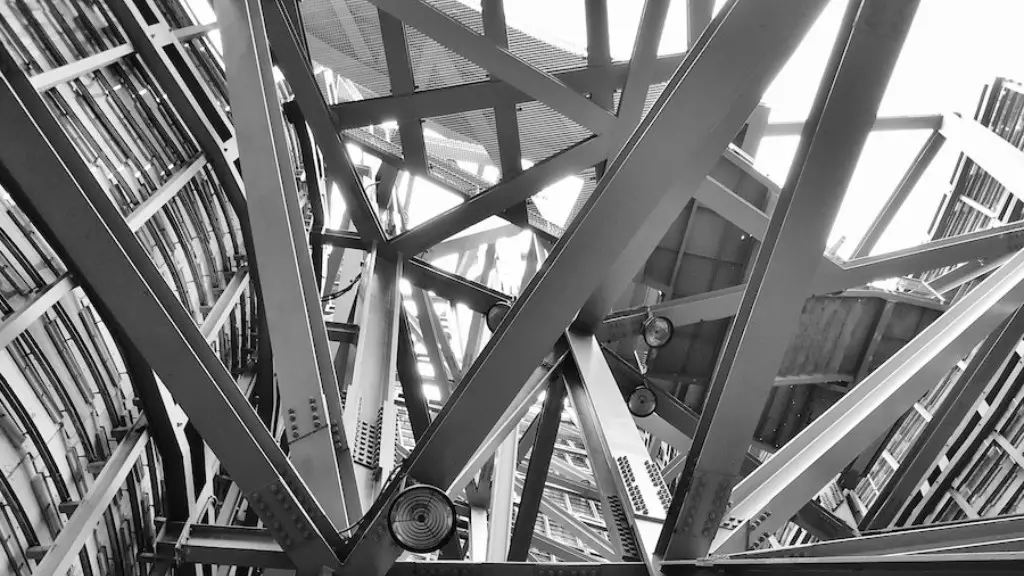Biophilic architecture is a term coined by biologist E.O. Wilson to describe a way of designing and constructing buildings that takes into account the evolved preferences of humans for contact with nature and other forms of life. The idea is based on the premise that humans have an innate need for contact with nature, and that this need can be manifest in many ways, including through architecture.
Biophilic architecture is an approach to design that seeks to connect people with nature. The goal is to create spaces that are not only aesthetically pleasing, but also promote physical and mental well-being. This can be achieved through the use of natural materials, plants, and other features that connect people to the outdoors.
What is the concept of biophilic?
Biophilic design is an approach to architecture that seeks to connect building occupants more closely to nature. Biophilic designed buildings incorporate things like natural lighting and ventilation, natural landscape features and other elements to create a more productive and healthy built environment for people.
Biophilic design is a design movement inspired by nature that seeks to create environments that are beneficial for both people and the natural world. This approach incorporates features from the natural world into buildings and landscapes, and has been shown to improve occupants’ health and well-being.
What are the principles of biophilic architecture
Biophilic design principles are generally organised into three categories: nature in the space, nature of the space, and natural analogues. Nature in the space refers to the direct presence of nature and often includes multi-sensory interactions. Nature of the space refers to the way the space is designed to connect people with nature. Natural analogues refers to the use of natural elements or processes to achieve specific design goals.
Biophilic design elements can help to create a more pleasant and enjoyable environment. They can also help to improve employee productivity and morale.
What are the nine values of biophilia?
Biophilia is the love of nature. It is a concept that has been around for centuries, but it has only recently been given a name. Biophilia is the belief that humans are innately attracted to nature and that our relationship with nature is essential to our well-being.
There are many benefits to biophilia. Studies have shown that contact with nature can reduce stress, improve moods, and increase energy levels. Nature can also provide a sense of calm and relaxation. Being in nature can help us to connect with our own inner nature and to feel more connected to the world around us.
Biophilia is important for our mental and physical health. It can help us to feel more connected to the world around us and to our own inner nature.
Biophilia is the love of life or living systems. It is more than just a philosophy—biophilic design has been found to support cognitive function, physical health, and psychological well-being. The Natural Resources Defense Council (NRDC) incorporates biophilic design into all its offices to encourage the connection between humans and nature, as well as promote staff wellness and productivity.
What is the opposite of biophilic design?
Biomimicry is the practice of emulating life’s engineering in order to create more sustainable and efficient designs. Biophilia is the love of nature and the desire to be close to it. Biophilic design is the application of this love of nature to the built environment, creating spaces that feel natural and comfortable for people.
Biophilic design is a way of designing buildings and other built environments with the intention of creating spaces that are more attuned to the natural world.
The three categories of biophilic design are Nature in the Space, Natural Analogues, and Nature of the Space.
Nature in the Space refers to the incorporation of actual elements of nature into the built environment, such as plants, water features, and natural light.
Natural Analogues are features that mimic or echo elements of the natural world, such as using materials that resemble stone or wood, or incorporating shapes and forms that are found in nature.
Nature of the Space refers to the overall feeling or atmosphere of a space, and how it makes people feel. This can be achieved through the use of color, texture, and scent.
Biophilic design has been shown to have a number of positive benefits for both people and the environment. These benefits include improved mental and physical health, increased productivity, and decreased stress levels.
What is the difference between biophilic and green design
Green design is important for environmental conservation, but biophilic design is just as important for human health and wellbeing. The two are not mutually exclusive – in fact, they are complimentary. Both approaches seek to minimize our impact on the planet and its resources, but biophilic design goes a step further by also considering the human element.
Biophilic design takes into account the fact that we are animals too, and that we have an innate need for contact with nature. Green design may focus on energy efficiency and reduction of waste, but biophilic design also considers the impact of the built environment on our mental and physical health.
There is a growing body of evidence that suggests that contact with nature is good for us. Studies have shown that exposure to nature can reduce stress, anxiety, and depression, and can improve mood, focus, and productivity. There is also evidence to suggest that nature can have a positive impact on our physical health, including reducing blood pressure and heart rate, and improving immune function.
So, while green design is important for environmental conservation, biophilic design is just as important for human health and wellbeing. When it comes to creating a healthy and sustainable environment, we need to consider both approaches.
There is no one-size-fits-all answer when it comes to choosing a biophilic color palette. The colors that you ultimately select will depend on the specific environment that you’re trying to create and the effect that you want to achieve. However, some general guidelines that you may want to keep in mind include using subdued, natural colors that are reminiscent of the outdoors. earthy greens, soft browns, and natural beiges are all good choices. Alternatively, you could also go for a brighter, more cheerful palette featuring sunshine yellows and sky blues. Ultimately, it’s up to you to decide what will work best in your space.
What is the difference between biophilic and sustainable architecture?
It is important to note that both biophilic design and sustainable design approach the natural environment from different perspectives. Biophilic design focuses on the emotional aspect of the interaction with the environment, while sustainable design focuses on the physical and material aspects of the environment. Both approaches are important in order to create a healthy and balanced relationship with the natural world.
The value system behind biophilic interior design entails using sustainably sourced organic materials such as wood, cork, wool, leather and stone A biophilic design concept can also integrate circular economy materials made from coffee grinds, railroad timber, seaweed and coconut fibre, amongst many others. This design approach not only creates a healthy and pleasant environment for occupants, but also reduces the building’s ecological footprint.
Who is a famous biophilic architect
Biophilic design is all about creating a strong connection with nature. This can be done in many ways, such as by bringing in natural light, providing views of nature, using natural materials, and incorporating natural textures and patterns. By doing so, we can create spaces that are both aesthetically pleasing and good for our health and wellbeing.
The world is full of amazing and inspiring biophilic buildings and structures! Here are just a few examples:
-The Spheres in Seattle, USA are a must-see. They are three connected glass orbs that house a tropical rainforest, and are a beautiful sight to behold.
-The University of Melbourne Biosciences Building in Melbourne, Australia is a stunning example of how biophilic design can be integrated into an educational setting.
-Mirrorcube in Harads, Sweden is a unique and innovative structure that is covered in mirrors, reflecting the surrounding forest.
-Pasona Urban Farm in Tokyo, Japan is an incredible example of how urban spaces can be utilized for agriculture.
-Bunjil Place in Melbourne, Australia is a multipurpose center that features a variety of biophilic features, such as an indoor/outdoor atrium and a living green wall.
What are the two dimensions of biophilic design?
Biophilic design aims to connect people with nature in both direct and indirect ways. Direct experiences with nature can include features like daylight, plants, animals, and natural habitats. Indirect experiences can include features like potted plants, water fountains, and aquariums. both types of experiences can lead to a deeper connection with nature, which can have positive impacts on health and well-being.
Daylighting is a biophilic design strategy that is important for providing connection to nature and healthy indoor environments. Solar orientation, window placement and operability, and glazing type are a few of the considerations when increasing daylight in a space.
Visual connections to nature are important for providing a sense of connection and place. Views of nature, either real or simulated, can help connect people to the outdoors.
Natural materials can help create a connection to nature by bringing the outdoors in. Use of wood, stone, water, plants, and other natural materials can help to create a sense of connection to the natural world.
How does biophilia help mental health
Our connection to nature has a profound impact on our well-being. Research suggests that biophilia can have a positive impact on our mind-body systems, reducing anxiety, improving creativity and boosting mood. By spending time in nature, we can improve our physical and mental health.
Humans have always been fascinated by the natural world and the creatures that inhabit it. This fascination is driven by a need to interact with other forms of life, which is innate and biologically-driven. This need is known as biophilia. Biophilia literally translates to “love of life,” and it is the idea that humans are drawn to nature and dependent on it because of this need.
Conclusion
Biophilic architecture is a form of architecture that creates a seamless connection between the built environment and the natural world.
The design of biophilic architecture takes into account the following:
1. The proximity of nature: Nature should be close enough to be easily accessed and enjoyed.
2. The visual connection to nature: The built environment should provide views of nature, whether it be through windows, skylights, or other means.
3. The incorporation of natural materials: The use of natural materials such as wood, stone, and plants in the design of the built environment creates a sense of connection to nature.
4. The presence of water: The inclusion of water features such as fountains, ponds, or waterfalls can help to create a sense of tranquility and relaxation.
5. The use of natural light: The incorporation of natural light into the design of the built environment creates a bright and airy space that feels connected to the outdoors.
6. The inclusion of greenery: The use of plants and trees in the design of the built environment helps to create a sense of peace and serenity.
In conclusion, biophilic architecture is a type of design that focuses on connecting people with nature. This can be done through incorporating features such as plants, natural light, and water into the design of a space. By doing so, it is said to improve the health and well-being of those who interact with it.





